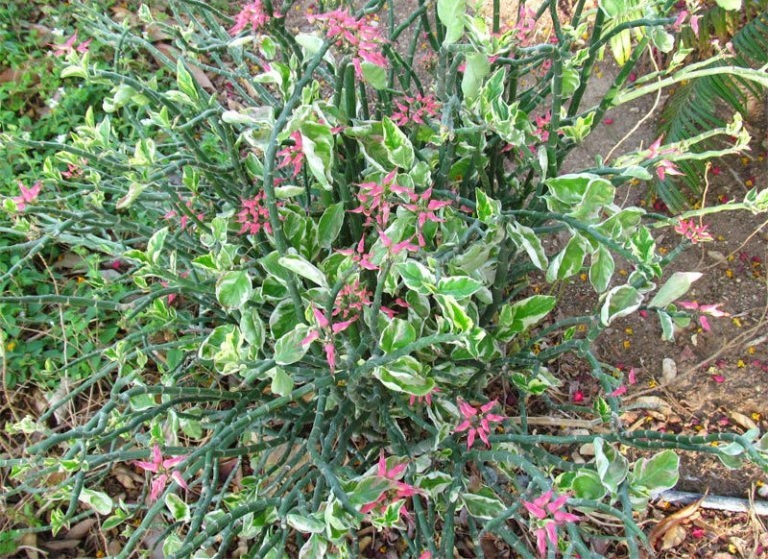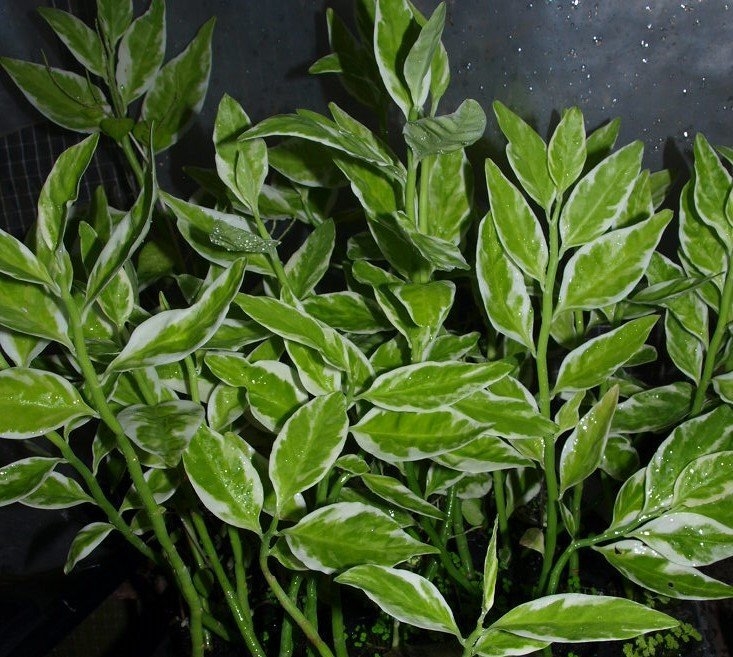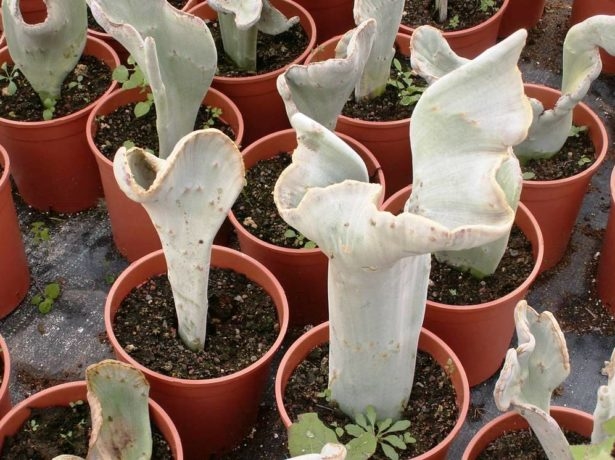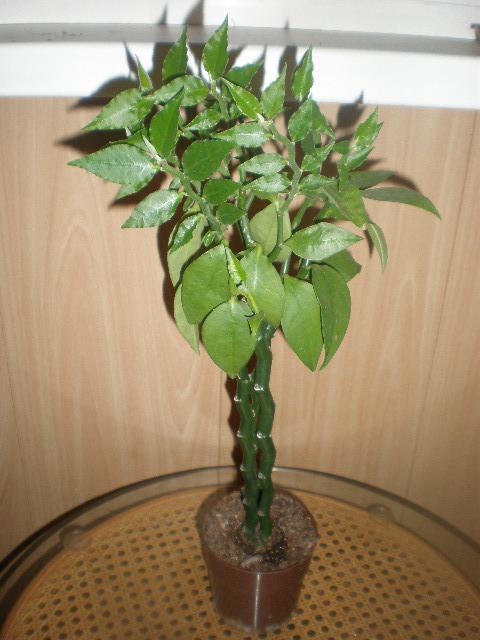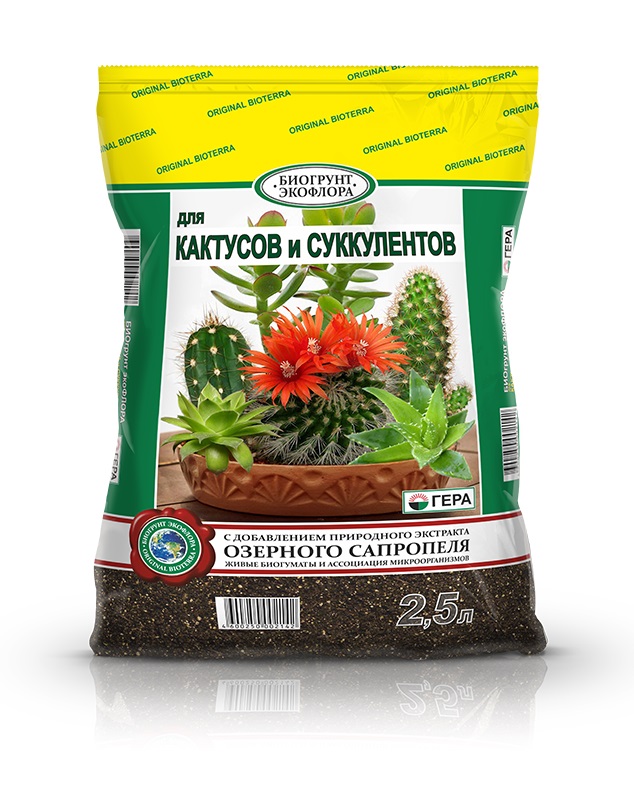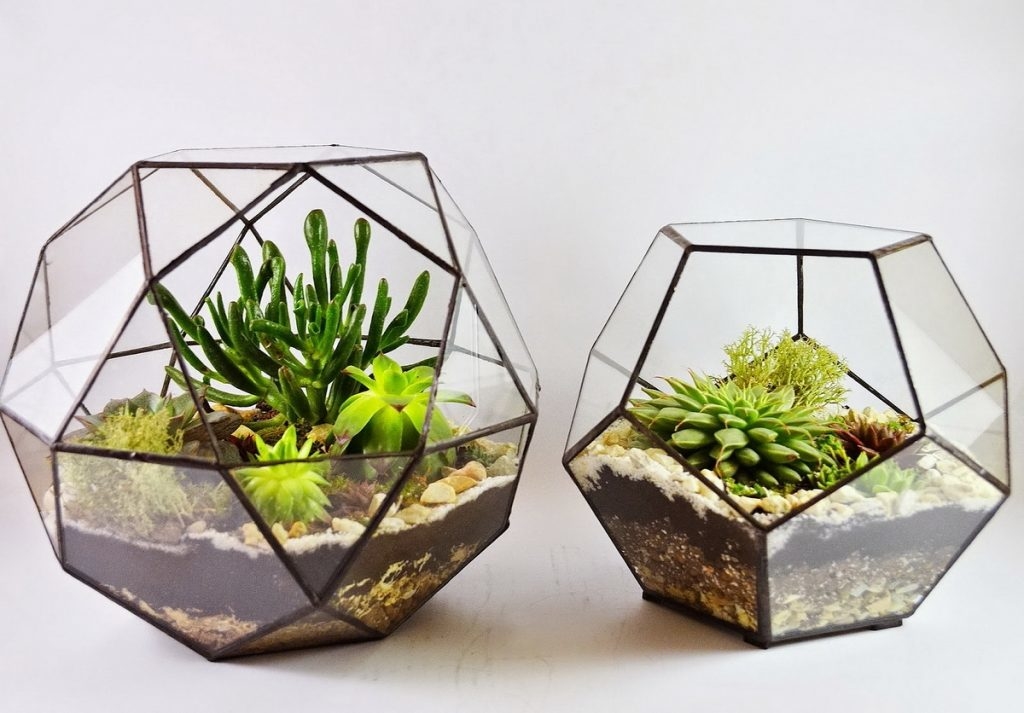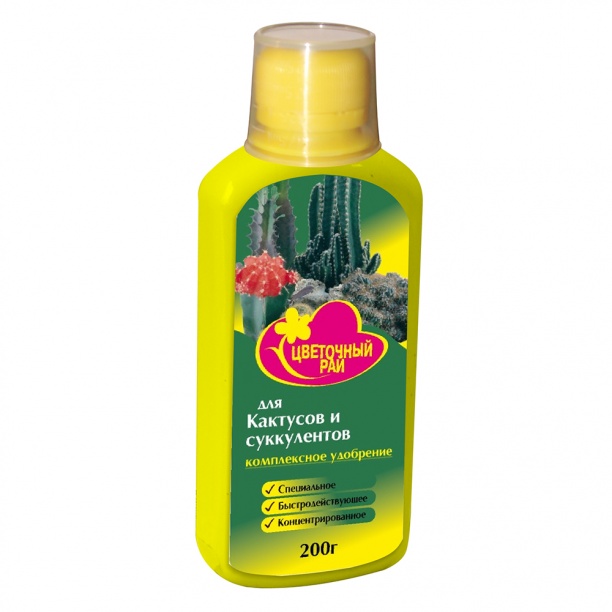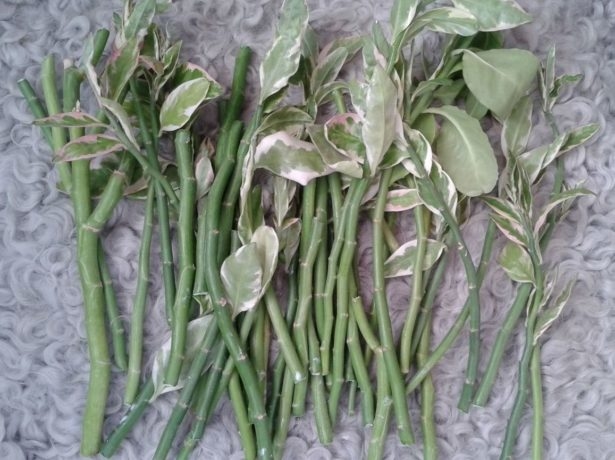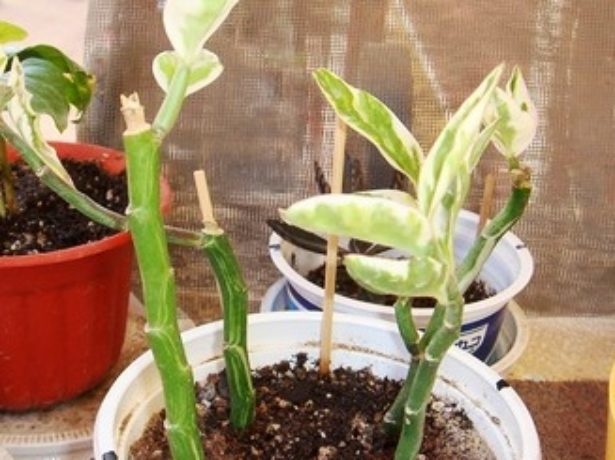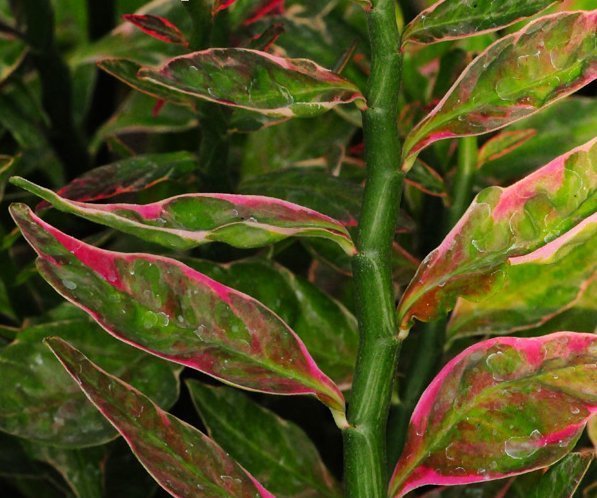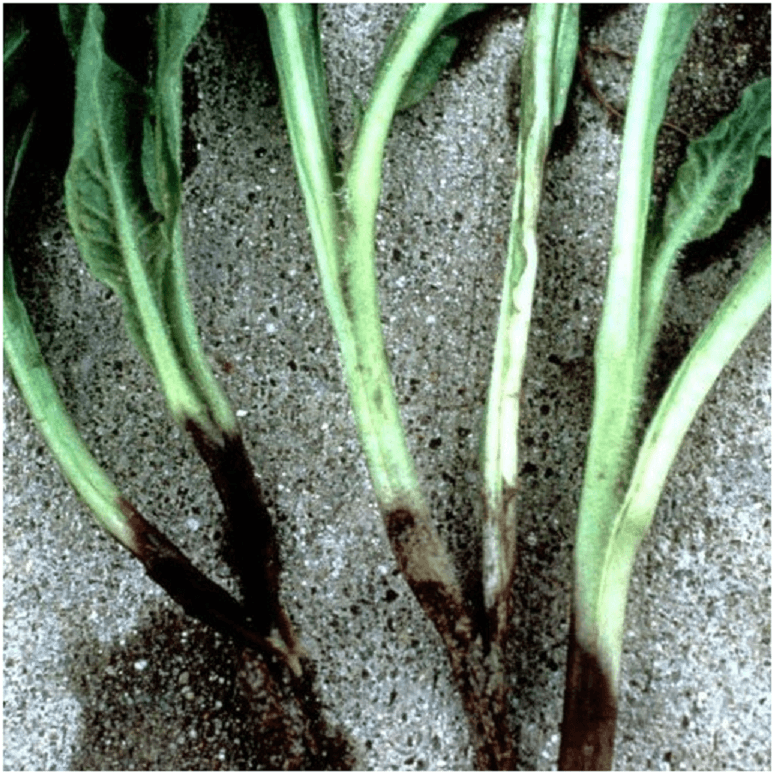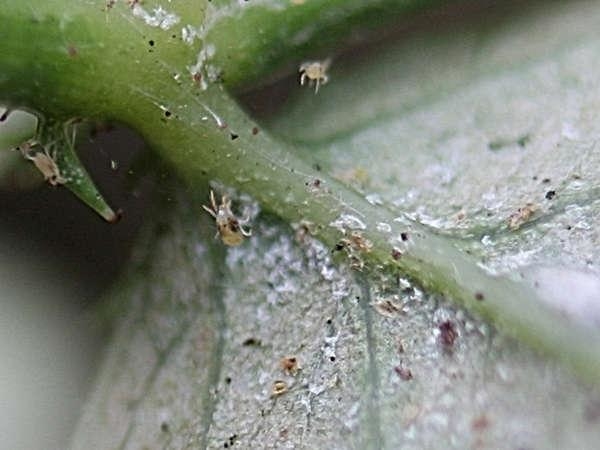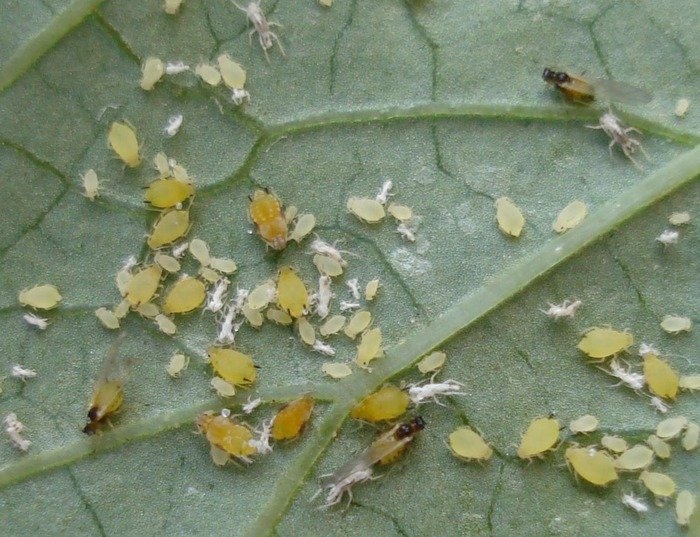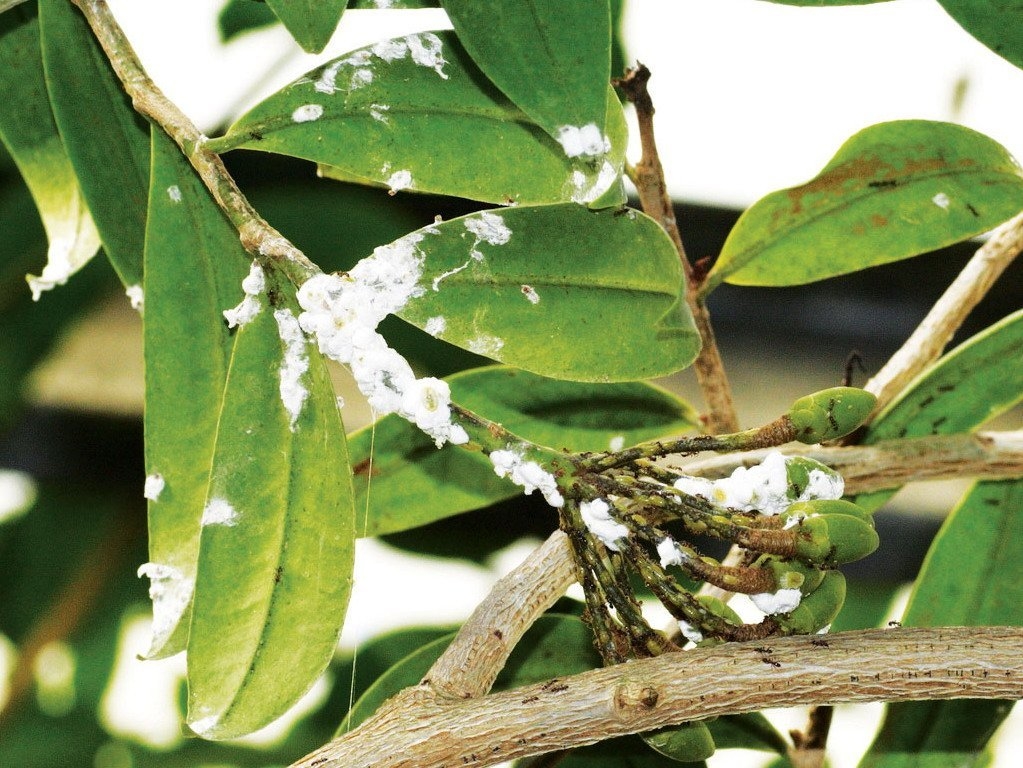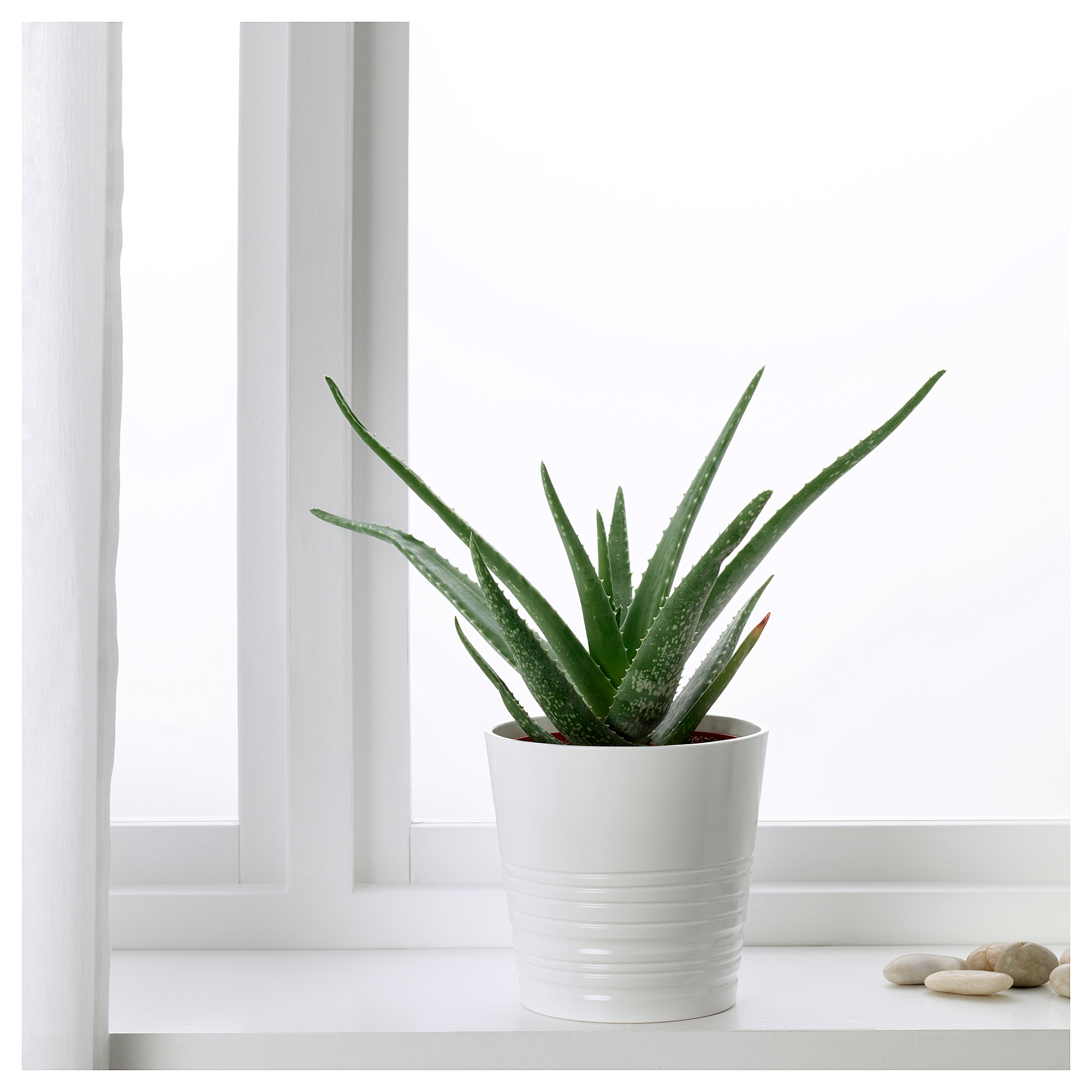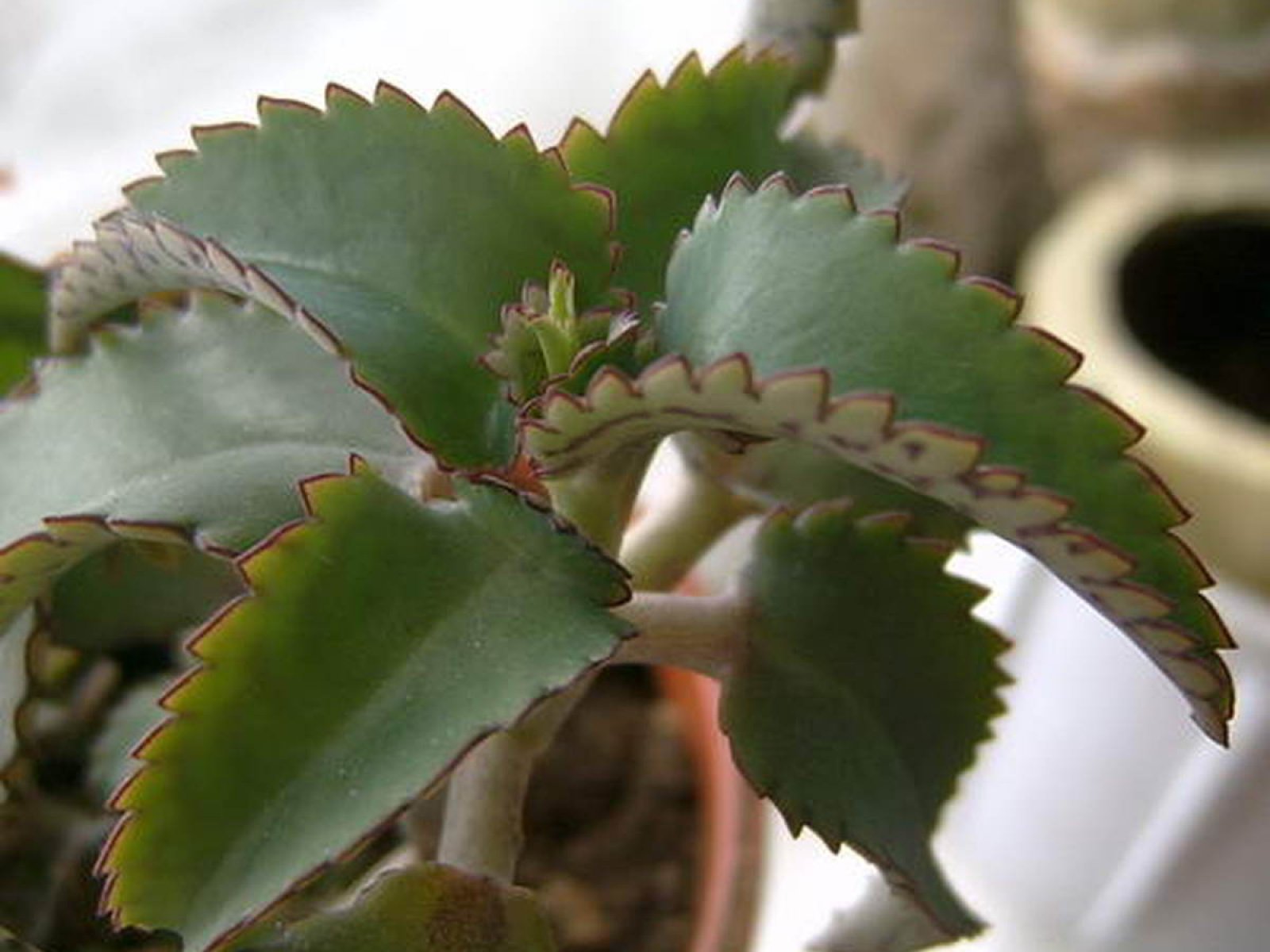Pedilanthus is an ornamental flowering plant belonging to the Euphorbia family. In nature, it occurs in South and Central America. Succulent got its name from a combination of two Greek words that translate as "shoe" and "flower". Its flowers really resemble a woman's shoe in shape. Several varieties of this plant are grown at home. Florists are attracted not only by unusual flowers, but also by beautiful variegated foliage.
Content
What does a flower look like in nature and why is it interesting
In its natural environment, this succulent plant is a branching shrub or small tree, reaching 3 m in height. During the rainy season, pedilanthus accumulates moisture in the stems and leaf plates covered with a waxy coating, and during drought it often completely sheds leaves. With the onset of the flowering period, the plant develops small umbrella-shaped flowers with deep pink or reddish bracts.
Growing pedilanthus indoors is quite simple. A novice florist will also cope with this task.
This shrub will not only decorate the interior, but also fill the air with oxygen. Its leaves are rich in essential oils that act as an antiseptic and absorb indoor toxins. But this plant can also be harmful, since its feature is acrid sap released when leaves and stems are damaged. It burns mucous membranes and skin.
Pedilanthus should be placed out of the reach of children in order to protect them from poisoning. Cats and dogs most often do not approach the flower, but the birds will have to be driven away, since the plant sap is deadly for them.
Types and varieties with photos
The following varieties of this ornamental plant are grown indoors:
Pedilanthus titimaloid
This species with dark green leaves with white edging is the most common. It is distinguished by a zigzag stem, which is especially pronounced in the breeding hybrid "smalii", and it is thanks to him that it received such names as "Devil's Ridge", "Devil's Bridge" and "Jacob's Ladder".
Pedilanthus koalkomanevsky
The plant stands out for its peach or salmon flowers with a pinkish tint.
Large-fruited pedilanthus
A succulent plant is a branching bush that has virtually no leaves. On one stem, both cylindrical and flat leaf plates, as well as flowers of a coral or bright scarlet hue, can be present.
Pedilanthus macrocarpus
This variety is leafless and has a peculiar shape.
Pedilanthus Finca
This type is called "Christmas candle". The lower part of the plant is bare, and at the top there are emerald green leaves.
Landing
After purchasing the pedilanthus, it is recommended to immediately transplant it into a suitable low and close container with drainage holes.It is advisable that the pot is made of ceramic, since it is good for air and moisture permeability.
For pedilanthus, it is necessary to prepare a soil mixture. You need to mix the following components:
- 1 part fertile turf;
- 2 pieces of leafy land;
- 2 parts of coarse river sand.
You can buy ready-made soil at a flower shop. A soil mixture for succulents and cacti is suitable for pedilanthus.
Florarium
Pedilanthus looks very impressive in the florarium, which is a small home greenhouse. In this case, the plant is planted in a transparent container made of glass or plastic. Landing is carried out as follows:
- The selected vessel is thoroughly washed and wiped outside and inside with alcohol.
- A centimeter layer of drainage is laid out on the bottom of the container, the same amount of wood ash and crushed activated carbon.
- The soil is poured on top and leveled, preparing a hole for pedilanthus.
- Plant roots are washed and soaked in 1% fungicide solution for a quarter of an hour.
- Pedilanthus is planted in a container after its root system dries out.
- The soil is slightly moistened with a syringe without a needle.
The composition can be decorated with colored sand, pieces of bark and glass, pebbles, stones, moss and miniature figurines. If the florarium is closed, then it must be ventilated daily, since high humidity can provoke the appearance of rot. As soon as the pedilanthus outgrows the container, it must be transplanted into a suitable pot.
Conditions of detention
Necessary conditions for the growth and flowering of pedilanthus, depending on the season:
| Season | Lighting | Optimal temperature conditions | Humidity | Accommodation |
| Spring, summer and fall | The plant needs bright, but diffused light. It must be protected from direct sunlight. | The temperature should be within + 23 ... 26 ° C | In the heat, pedilanthus must be sprayed every day, but not abundantly. You can also wipe its sheet plates with a damp sponge. It is advisable to place containers filled with water near the flower pot. | In summer, you can take the pot out to the terrace or balcony. The rest of the time, pedilanthus should be kept on the western windowsill or on a stand 1 m away from the southern window |
| Winter | The pedilanthus needs additional lighting. The duration of daylight hours during this period is at least 10 hours | It is desirable that the thermometer does not drop below +15 ° C | The plant does not need spraying. The succulent plant should be kept away from heating appliances. | West or east window sill |
Care features
Caring for a pedilanthus at home involves the following manipulations:
- correct watering;
- fertilization;
- transfer;
- pruning.
With proper care and maintenance, the flowering period for this tropical plant lasts from November to December. After the pedilanthus has faded, its inflorescences must be cut off with sharp scissors. As soon as this succulent ends flowering, a dormant period begins, which lasts until the beginning of spring.
Watering
In the summer, the plant needs abundant watering. At the same time, it is recommended to moisten the soil after the leaves are slightly wrinkled or drooped (about 1 time in 3-4 days). It is impossible to fill in the pedilanthus, since its root system will begin to rot.
During the dormant period, the number of waterings must be reduced. It is necessary to moisten the soil only when the top layer of the soil dries out, about 1 time in 7-10 days. Water for irrigation and spraying must be filtered or settled. It is advisable to heat it up to +30 ºС and add a little citric acid.
Top dressing
It is necessary to feed the pedilanthus in the spring, summer and autumn. Fertilizers with a high nitrogen content are not recommended. Once a month, after watering, the plant should be fed with a liquid solution intended for succulents and cacti.
A strong concentration of fertilizer should be avoided, since pedilanthus more easily tolerates a lack of microelements than an excess of them.
Transfer
A transplant is recommended when the roots appear from the drainage hole. Since the root system of pedilanthus develops slowly, the plant can be transplanted no more than 1 time in 3 years. It is advisable to carry out the procedure in mid-spring, when new leaves begin to form on the succulent.
First you need to pick up a container. The diameter of the new pot should be 1.5 cm larger than the previous one. The transplant should be carried out as follows:
- Pour a 2-cm layer of drainage into a new container (expanded clay is suitable).
- Fill the pot up to half with fresh sterilized soil mixture.
- Remove the pedilanthus from the old container and gently shake off the soil from its roots.
- Examine the root system and cut dry, black and slimy to the touch roots with sterile sharp scissors. On rotten roots, you need to cut off not only the blackened parts, but also an additional 4 cm.
- Plant the plant in a new container and add soil around the edges.
- Shake the container several times and pour over the pedilanthus.
For 7-10 days, the succulent must be removed to a dark, warm room to minimize transplant stress. Then the container with the plant can be returned to its original place and taken care of as usual.
Pruning
The plant must be pruned after transplanting. About a third of the shoots should be removed. Pruning the pedilanthus is necessary to accelerate growth and stimulate branching. The procedure must be performed using a disinfected instrument. The cut points should be treated with crushed coal or colloidal sulfur.
Pruning should be done with rubber gloves to avoid the poisonous sap of the plant getting on the skin.
Reproduction
Under natural conditions, pedilanthus propagates by seeds, but it is very difficult to get them at home. They are also rare in flower shops. Therefore, the succulent is propagated by cuttings. This procedure is recommended in the spring.
Step-by-step instructions for grafting pedilanthus:
Planting needs to be watered and removed to a shaded warm place. As soon as the roots grow, the plants must be planted in separate containers and started to care for them, as for adult pedilanthus.
Growing problems
Despite the fact that this succulent is unpretentious, improper care can lead to the fact that it begins to fade and stops developing. Most often, flower growers have the following problems when growing pedilanthus:
| Problem | Remedy methods |
| Falling leaves | In winter and autumn, this phenomenon is considered the norm. In other cases, it is necessary to protect the plant from direct sunlight, increase the frequency of watering and provide additional lighting. |
| Yellowing and drying of the tips of the leaf plates | Increase the humidity level in the room and move the pedilanthus out of the sun |
| Thinning stems and faded leaves | If the problem arose in the summer, then the pot with the plant must be rearranged in a place with good lighting. During the winter months, the room temperature should be lowered to the optimum |
| Lack of flowering | The plant needs to provide a dormant period so that it blooms next year. |
| Leaf color change (acquire a poisonous green tint) | Fertilize succulent with nitrogen-free formulations only |
| Uneven development of shoots | The problem arises if the container with the plant is not positioned correctly and more light falls on one side.If it is not possible to rearrange the pot to another place, then you should periodically rotate the container around its axis |
| Blackening of stems and petioles at the base | Stop watering and let the soil dry out. In the future, you should try not to flood the succulent |
Often, the white border on the leaves of the pedilanthus begins to turn pink. But this situation is the norm, since in the summer or autumn, under the influence of sunlight, the leaf plates change color. In this case, you do not need to take any measures, since the plant will bounce back on its own.
Diseases and pests
When buying, you must carefully examine the plant. If there are any spots, sticky marks and small dots on it, then the purchase should be discarded.
Subject to all the rules for the care and maintenance of this succulent, it is rarely attacked by pests and diseases. But if any plant in the room is infected, then most likely the pedilanthus will also be affected. In this case, it must be isolated and treatment started.
The list of pests and diseases that most often affect this succulent is as follows:
Signs and superstitions about a flower in the house
There are many superstitions and signs associated with this tropical plant. If you believe them, then it is advisable to keep the succulent in the workplace, since it promises a raise in salary or a promotion.
Among the common signs associated with pedilanthus, it is worth highlighting:
- the absence of flowering means that the harmony of family relations is disturbed in the house;
- shedding leaves indicates that someone from the household will soon get sick;
- declination of leaf plates downward portends problems in the professional sphere;
- a change in the color of the leaves promises changes in life (if they darkened, then expect trouble, and if they brightened - good news);
- rotting succulent indicates that misfortune may befall one of the household members.
You should not blindly believe such "omens", since such phenomena are observed with improper or insufficient care of the plant or with the development of a certain disease in a succulent.
The unpretentious pedilanthus in care is perfect for growing indoors. This succulent looks good not only as an original single flower, but also in composition with other decorative deciduous and flowering plants.
